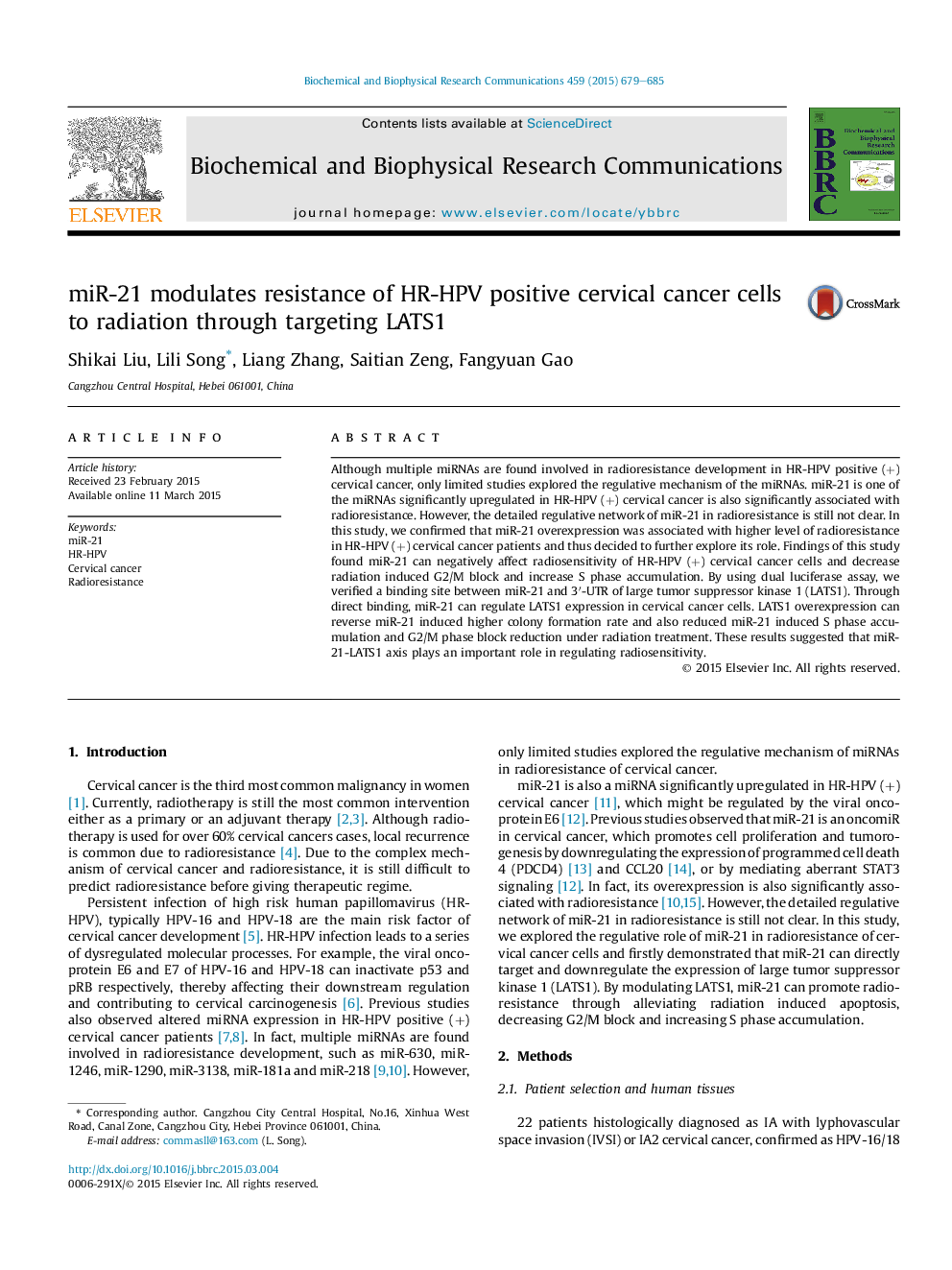| کد مقاله | کد نشریه | سال انتشار | مقاله انگلیسی | نسخه تمام متن |
|---|---|---|---|---|
| 1928237 | 1050325 | 2015 | 7 صفحه PDF | دانلود رایگان |

• miR-21 is highly expressed in HR-HPV (+) radioresistant cervical cancer patients.
• miR-21 can negatively affect radiosensitivity of HR-HPV (+) cervical cancer cells.
• miR-21 can decrease radiation induced G2/M block and increase S phase accumulation.
• miR-21 modulates radiosensitivity cervical cancer cell by directly targeting LATS1.
Although multiple miRNAs are found involved in radioresistance development in HR-HPV positive (+) cervical cancer, only limited studies explored the regulative mechanism of the miRNAs. miR-21 is one of the miRNAs significantly upregulated in HR-HPV (+) cervical cancer is also significantly associated with radioresistance. However, the detailed regulative network of miR-21 in radioresistance is still not clear. In this study, we confirmed that miR-21 overexpression was associated with higher level of radioresistance in HR-HPV (+) cervical cancer patients and thus decided to further explore its role. Findings of this study found miR-21 can negatively affect radiosensitivity of HR-HPV (+) cervical cancer cells and decrease radiation induced G2/M block and increase S phase accumulation. By using dual luciferase assay, we verified a binding site between miR-21 and 3′-UTR of large tumor suppressor kinase 1 (LATS1). Through direct binding, miR-21 can regulate LATS1 expression in cervical cancer cells. LATS1 overexpression can reverse miR-21 induced higher colony formation rate and also reduced miR-21 induced S phase accumulation and G2/M phase block reduction under radiation treatment. These results suggested that miR-21-LATS1 axis plays an important role in regulating radiosensitivity.
Journal: Biochemical and Biophysical Research Communications - Volume 459, Issue 4, 17 April 2015, Pages 679–685